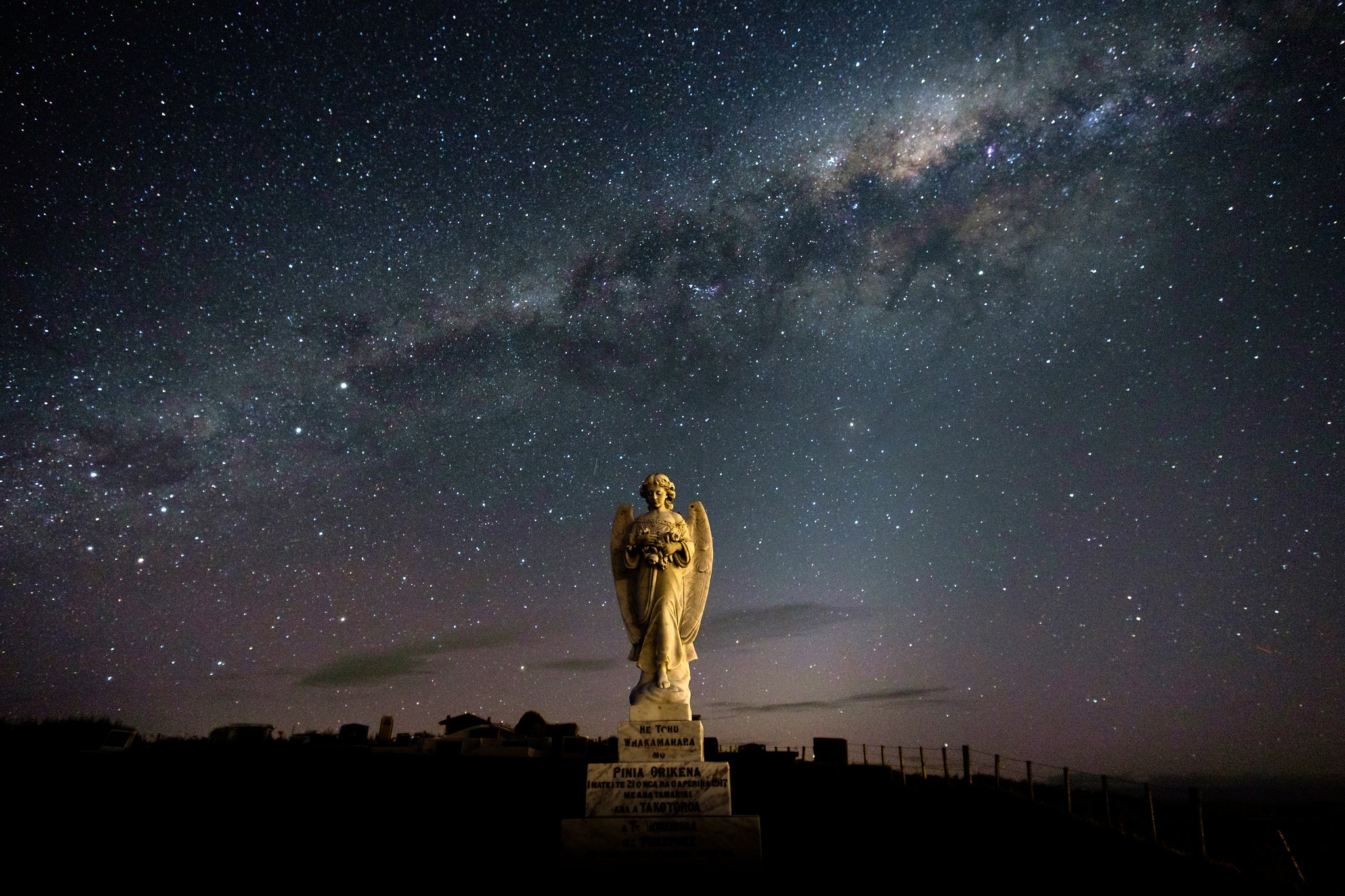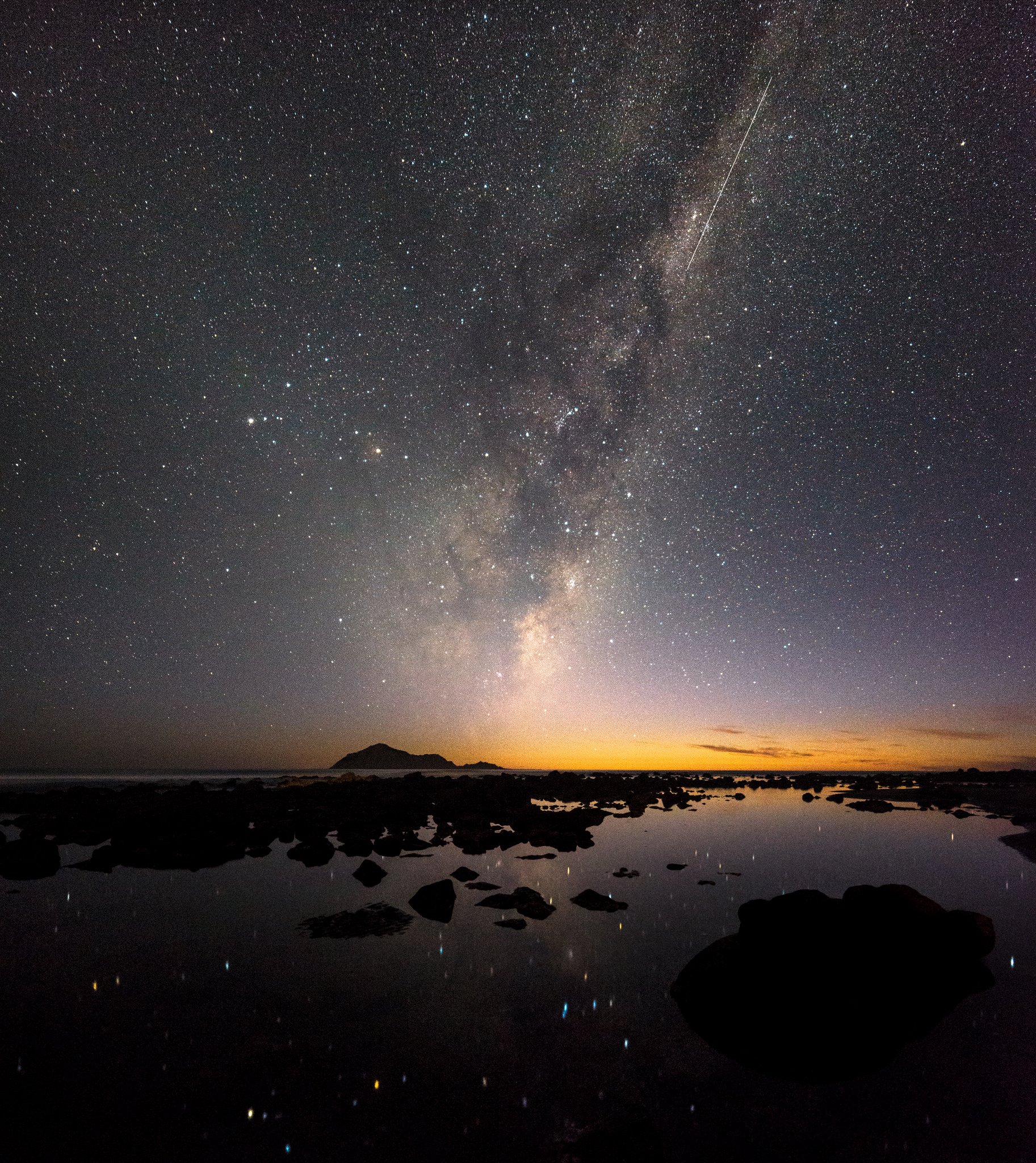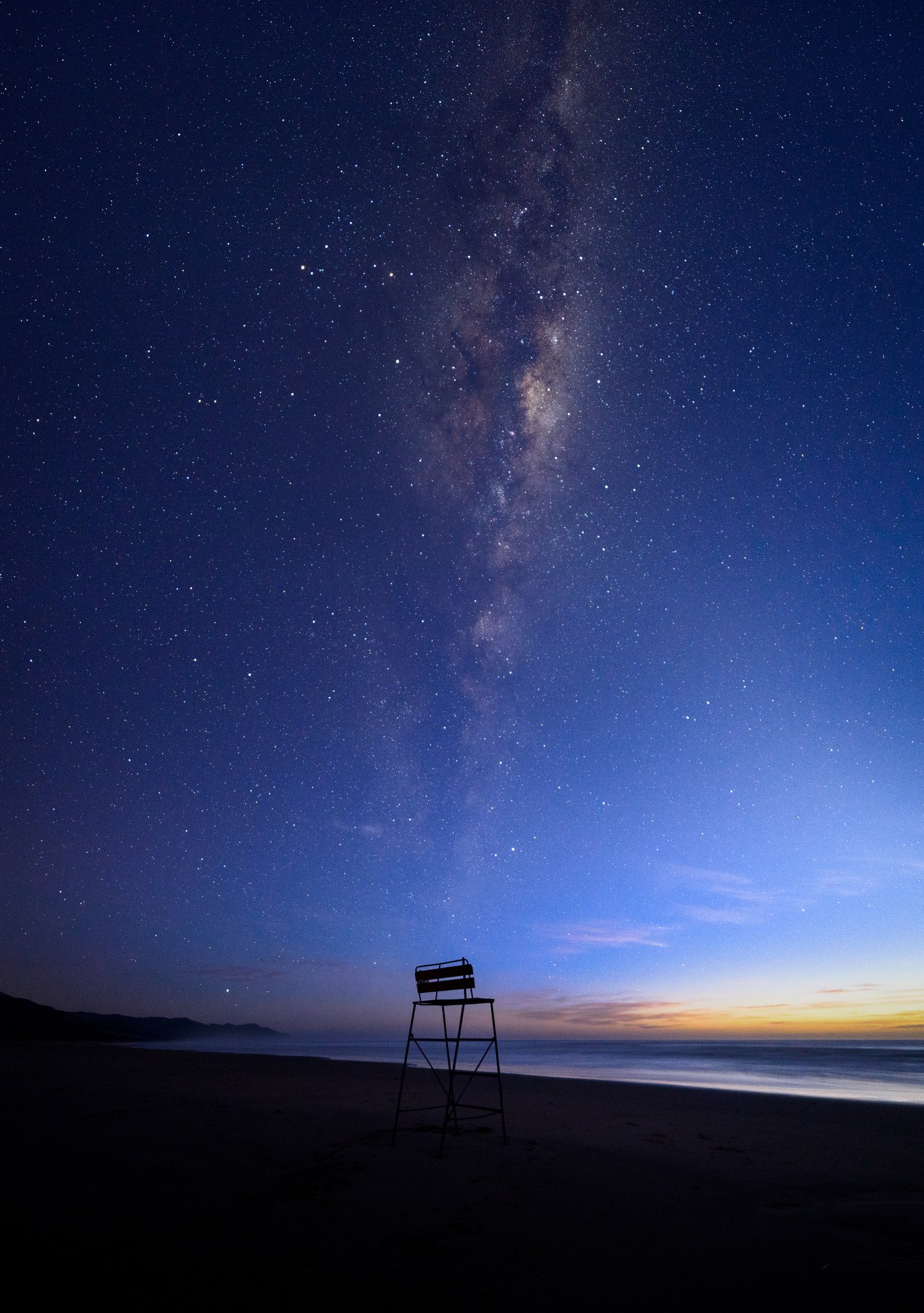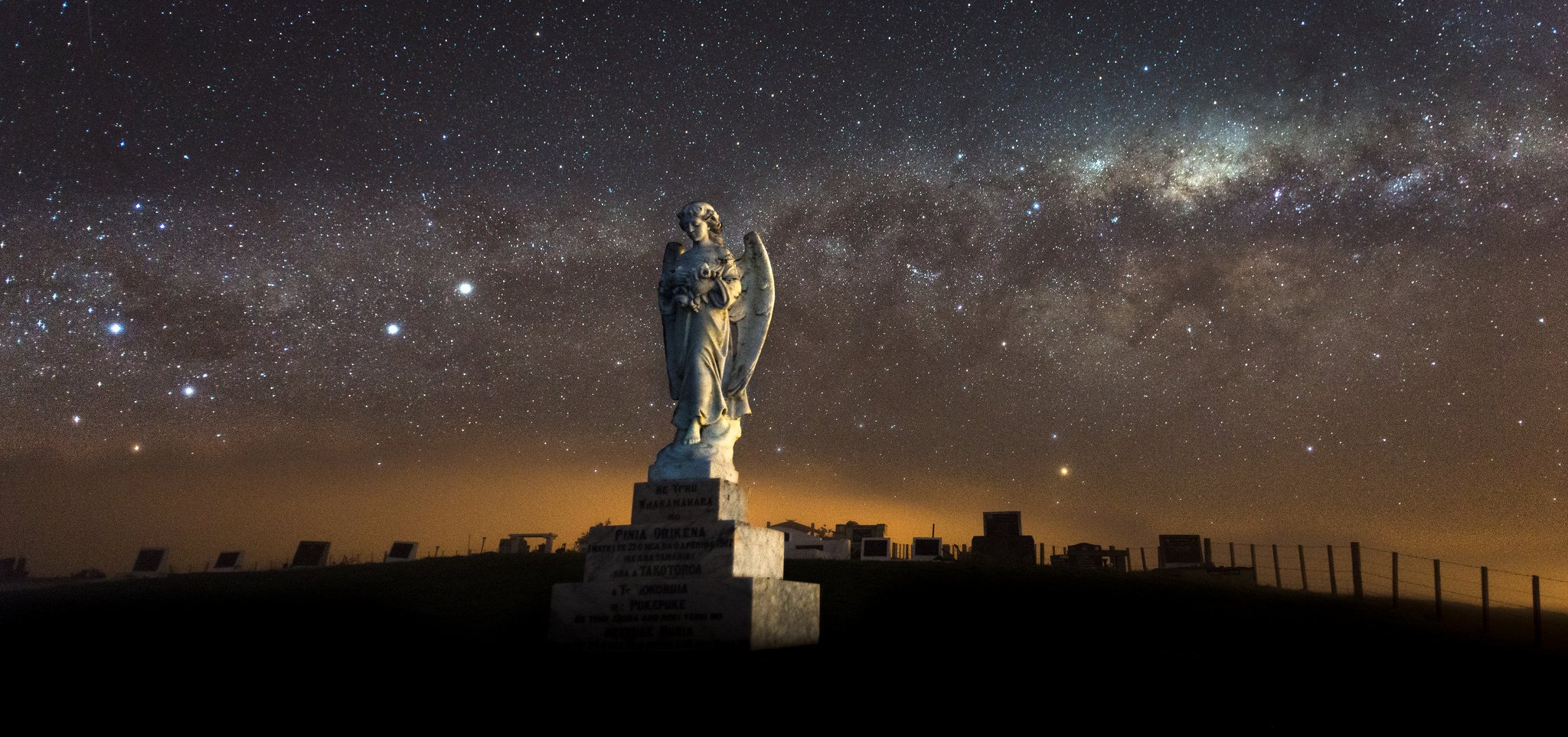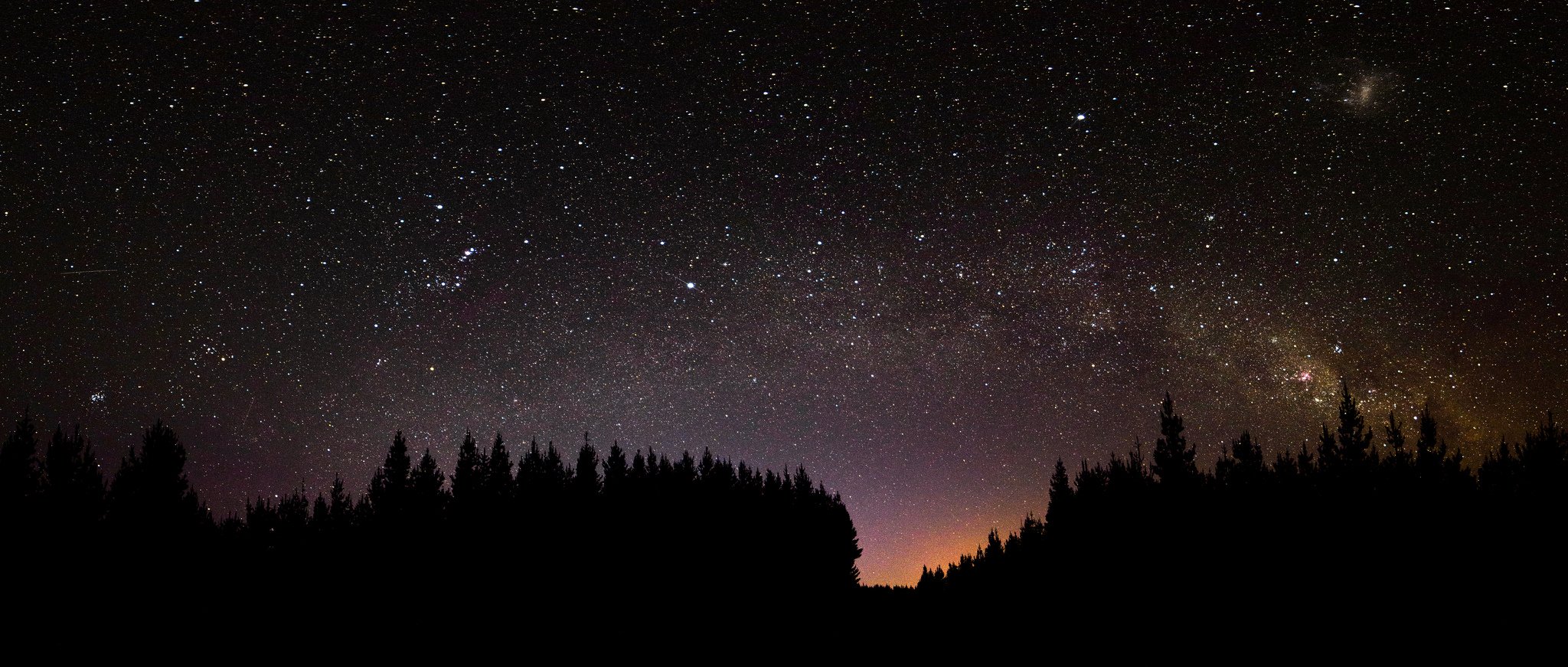Astrophotography in Hawkes Bay
I clearly remember my first attempt at Astrophotography in 2012. I had seen photos of the night sky and was amazed that modern day cameras could effectively see in the dark, so I headed out one cold clear winters night to capture the night sky; the results were pretty poor but I captured enough at that first attempt ( I actually managed to accidentally capture a portion of the Milky Way in some of the shots ) to ensure that I was hooked. Please excuse me for not showing those images; they were an important stepping stone to understanding astrophotography, but that doesn’t mean that I want anyone to see them!
After moving to Hawke’s Bay in 2008 I am pretty sure that I saw more stars in the sky in the first few weeks of living here than I had ever seen in my life before, so I was pretty sure that with a a bit of learning and a lot of practice I could capture photos similar to those that had got me interested in astrophotography, but with the beauty of the Hawke’s Bay night sky in my shots.
As a region Hawke’s Bay is blessed with many things that contribute to great astrophotography: settled weather ( especially in the winter months ), large areas of open dark countryside within a short drive, relatively low light pollution levels ( especially given the fact we have two reasonably sized cities within 30kms of each other right in the heart of the district ) and we have sea to our east ( I will explain the importance of that later).
The Milky Way
So a bit of information about astrophotography for those just starting out ( it has been described as the nerdiest form of photography so bear with me if this gets a little technical ). Our galaxy, The Milky Way, appears to us on Earth as a band of stars encircling our planet. Some portion of the Milky Way is always visible to us in our night sky, but for reasons of the way our planet rotates and wobbles we see different parts of the Milky Way in our skies at different times of the year. Due to Earths location within the Milky Way we have two distinct areas that we can see; our view towards the centre of the Milky Way is densely packed with stars and areas of interest, and is therefore main part to feature in astrophotography, whereas our view towards the outer edge of the galaxy is less densely packed with stars but still forms a visible band in the sky.
In the southern hemisphere we are lucky to be able to see the core of the Milky Way through our winter months, with it’s long nights making astrophotography much easier than in the northern hemisphere where the core of the Milky Way is only visible through their summer months, so for many people living in northern parts of North America and Europe the almost 24 hour daylight makes capturing shots of the core very difficult.
During our winter months ( or more February to November ) the core of the Milky Way appears in different parts of the sky, and has quite different orientations, depending on the time of year and the time of day ( or night ). In early February we normally get our first look at the core of the Milky Way for the year as it starts to move away from the area of the sky that our Sun occupies, and it appears in the early morning ( about an hour before sunrise ) as a near vertical band of stars stretching from the eastern horizon ( this is why it is good to be on the east coast ) up to and through the Southern Cross, which quickly fades into the daylight as the sun appears. Both of the photos below were shot just before sunrise late January and mid-March respectively, looking east.
As the ‘astro season’ progresses this vertical line of stars which make up the core of the Milky Way is visible earlier and earlier in the night and by June is visible just after sunset. As the core ‘rises’ earlier and earlier through the year then that core is also visible for longer parts of the night until again around June it is visible through the entire night, starting as a vertical band in the early evening and progressing across the sky to form a near horizontal band of stars on the western horizon just before dawn. After June the vertical view starts to be wiped out by the setting sun to the west before it has a chance to be seen in the night sky, and the horizontal western view is visible earlier and earlier in the night, until around November when it is visible just after sunset and is only visible for a short time before the rotation of the Earth drags it below our western horizon.
The photos below were both shot looking west but the first one was shot in June just before sunrise and the second one was shot in October just after sunset.
So for the ‘beginner’ astrophotographer the easiest time to take photos of the main part of the Milky Way is around June about an hour after sunset to catch the rising Milky Way to the east, and in October at around the same time to see the setting Milky Way to the west.
The easiest way to determine where the core of the Milky Way is at any time is to find the Southern Cross ( which sits within the band of the Milky Way ) and whichever side of the Cross has the 2 Pointers on it is the same side as the core of the Milky Way.
Settings / Equipment
Getting good shots of the Milky Way, or the night sky in general, is unfortunately one area of photography where the gear does matter to a degree. The average phone or ‘point and shoot’ camera doesn’t have the range of adjustments to allow it to capture good photos in the dark, so normally a DSLR / Mirrorless camera will be required, and coupled with that a lens with a large aperture ( a low f number like f1.8 or f2.8 ) is preferable to let in as much light to the camera as possible. Also because you will need to shoot photos which take a few seconds to exposure a tripod is also essential to hold the camera steady.
The technicalities of choosing a camera, setting it up and shooting the Milky Way is a whole other topic in itself, which I am planing run some workshops on in June, so feel free to check out the workshop page on my website, www.ankh.co.nz, for more information.

